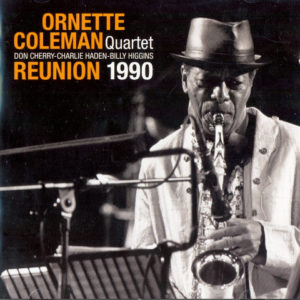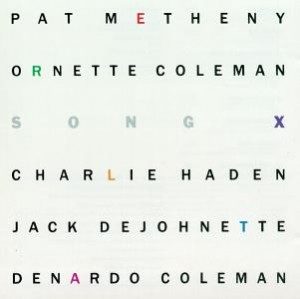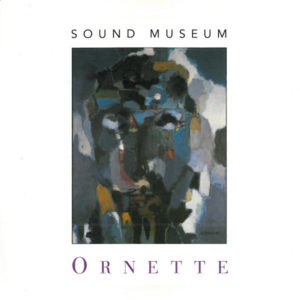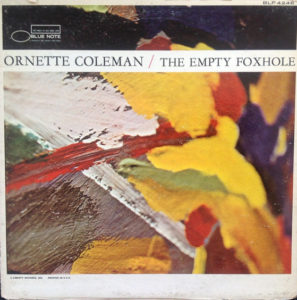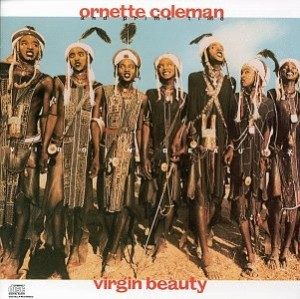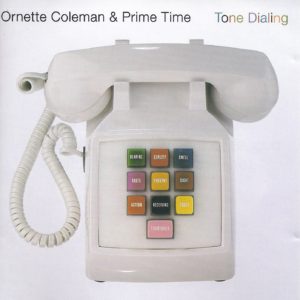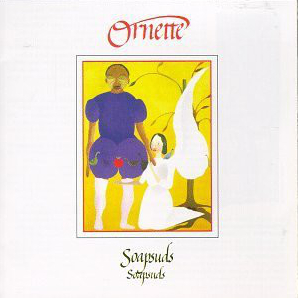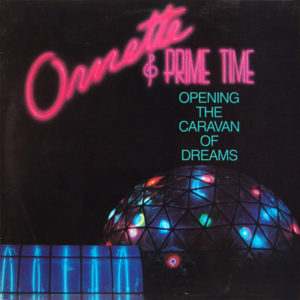What is “Harmolodics”? Well, it is the term that Ornette Coleman used to describe his concept for composing music. He wrote in Bomb magazine (Summer 1996):
“The composed concept of the music I write and play is called Harmolodics. The packaged definition is a theoretical method not exclusively applied to music. Harmolodics is a noun that can be applied for the use of participating in any form of information equally without erasing or altering the information. In music, the melody is not the lead. The lead is a sequenced unison form which requires anyone to transpose all melodies note for note to their instrument.”
One might still wonder what he really means by the term despite that “definition”. Ornette’s guitarist Bern Nix equated “Harmolodics” to counterpoint. Counterpoint is a concept established in European music.
“Jean Philippe Rameau is recognized as the founder of tonal harmonic theory—the theory developed first to account for music of the eighteenth century, later extended to ninteenth-century repertories. Musicians have been trained for the last two hundred years to perceive music in Rameau’s terms—as sequences of chords—and thus his formulations seem to us self-evident. Before Rameau’s Traité de l’harmonie [Treatise on Harmony] (1722), theories and pedagogical methods dealt principally with two aspects of music: coherence over time (mode) and the channeling of noise in the coordination of polyphonic voices (counterpoint).”
Susan McClary, “Afterword: The Politics of Silence and Sound” in Noise: The Political Economy of Music (Theory and History of Literature Volume 16) (1985).
Ornette’s music often expressed an extremely egalitarian relationship between polyphonic voices. In other words, it indeed sounded like it shared many of the goals of counterpoint. And yet, he had essentially no formal music training, in counterpoint or anything else. So while he was concerned with a return to pre-Rameau notions of “channeling of noise in the coordination of polyphonic voices” in general, he didn’t follow any of the specific rules of counterpoint. The idea of keeping all elements precisely equal is a newer idea in counterpoint. Composer Karlheinz Stockhausen wrote “Kontra-Punkte” in 1953, which he described as keeping all the voices equal. But Ornette’s approach was more concerned with establishing a melody that unified the performances of multiple musicians who had great freedom over other musical parameters like harmony. Though very much like Stockhausen, he was very interested in giving musicians meaningful choices —“positive freedom”—not just eliminating a few explicit prohibitions while leaving in place ingrained habits of thoughts.
Ornette’s Harmolodic theory in this sense represented a rejection of hierarchical social formations in favor of a more Rousseauian conception with strong anarchist tendencies along the lines of Pierre-Joseph Proudhon. Put another way, the project that is and was “Harmolodics” can be compared with Paulo Freire‘s statement about “critical pedagogy”:
“Cultural action either serves domination (consciously or unconsciously) or it serves the liberation of men and women.”
Ornette tended to view the rules governing music in relation to linguistics. He once pondered in an interview:
“Do you ever ask yourself if the language that you speak now interferes with your actual thoughts? Can a language of origin influence your thoughts?”
(“The Other’s Language: Jacques Derrida Interviews Ornette Coleman, 23 June 1997,” Les Inrockuptibles No. 115, August 20 – September 2, 1997, Timothy S. Murphy trans, Genre, No. 36, 2004). This appears like a restatement of the Sapir–Whorf Hypothesis of linguistic relativity. But beyond linguistics, Ornette’s theories can also be understood with reference to psychoanalysis. Jacques Lacan discussed symbolic matrices that group symbols in signifying chains. Even a series of individual random events can be grouped in a symbolic matrix that prohibits certain combinations. A series of coin tosses provides an illustration. For example, after a coin toss of heads, the immediately next coin toss can never result in a sequential pair of tails results, in a symbolic matrix of paired coin toss results. In this sense the signifying chain of the symbolic matrix keeps track of previous (historical) results. And by developing an impossibility in the signifying chain, this is like a spelling or grammatical rule. See Bruce Fink, The Lacanian Subject: Between Lanugage and Jouissance, pp. 14-20. Language is the result of socialization that imposes limiting social norms. The categories and filters that language—including musical language—provides result in a kind of barring or alienation of certain things that precede that language. Fink, pp. 24-26. In Ornette’s case, it is not difficult to imagine how his Halmolodics theories were influenced by the particular socialization imposed on him growing up poor as a second-class citizen in Jim Crow America, with ambitions to break with a symbolic matrix that, in a sense, rendered impossible any next step that left behind the social repression he experienced. Or the way his anarchist tendencies perhaps suggested a complete rejection of socialization. And in the purely musical realm, this manifested itself in a rejection of syntactic restrictions on fixed (i.e., socialized) rules of harmonic progression (i.e., musical training since Rameau) that rendered certain next pitches/harmonies symbolically impossible.
Still unanswered by all this in practice is what is put in place of the existing symbolic matrix in a musical group setting. Unconscious aspects must still be accounted for that individual performers bring with them. There must be some accounting for the way individual contributions come together in collective performance. This leads to the matter Stockhuasen noted:
“The famous anarchism is the ‘spiritual background’ which allows a place for everything and everybody without taking account of the fact that a certain object that you use, let’s say a triad, is not the same as any other sound object that’s less common or less simple. There’s a natural differentiation among things, and if you just leave them the way they fall then they function the way they are, which means some of these elements immediately oppress and dominate others, even acoustically cover others. What remains in your head after hearing such a piece are these few elements which are the most redundant. If there’s no choice, then things create their own hierarchy. If you don’t want to balance out something, you wind up with a nonintegrated situation.”
This is the problem of “The Tyranny of Structurelessness.” Ornette spoke much less explicitly about these issues, but his concrete activities with his various bands and recordings of his work provide some clues that might explain how he implicitly accounted for them.
The zen monk Ejo Takata had a keisaku (a wooden stick with a flat end used to strike meditating zen students who lapsed in concentration) that was engraved on the striking end with characters that said, “I can’t teach you anything. Learn by yourself—you know!” I like to think that, on its face, “Harmolodics” involved some kind of similar urging to self-directed learning, rather than the passive acceptance of dictated demands. Of course, Ornette would never hit people with sticks though! His approach was much more like that of “critical pedagogy”. But one of the enigmas about him was that his compositions were profoundly violent, in their attacks on both the objective/symbolic violence and the systemic/structural violence of the hegemonic culture—just as violent as Gandhi. On the other hand, “Harmolodics” also involved unstated influence, and one of the things that Ornette’s compositions accomplished was to establish a coherent framework for judgments as to value equivalencies of different musical elements. This is very similar to the way the origins of financial accounting and monetary systems involved establishing a framework for equating the values of different commodities. Here it is a matter of establishing value equivalencies for elements like melody, harmony and rhythm, and the various contributions of individual performers. Ornette had a much looser and democratic way of approaching that question than most contemporaries. Though there were still boundaries, mostly established through selection of performers (i.e., deciding who is included and who is excluded from the group), rehearsal format (i.e., the settling of pre-performance “debate”), and the like. These factors and boundaries were almost never reflected in a written score, but were still significant to resulting performances. When people express confusion as to what constitutes Harmolodics, the core of that confusion is really Ornette’s failure to document these latter factors that are external to purely musical notation and external to any recording of a resultant performance.
See also “Ornette Coleman, Through the Systemic Functional Linguistics Lens”

